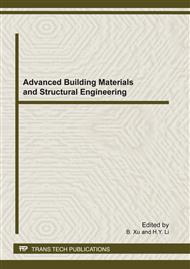p.250
p.255
p.259
p.265
p.272
p.277
p.281
p.289
p.293
Research on Error Compensation by Semi-Closed Loop Control for a 3-UPS Parallel Machine Tool
Abstract:
This paper took a 3-UPS Parallel Machine Tool (PMT) as the object of research; it mainly introduced the process of establishing the compensation strategy for this PMT. Firstly the kinematics equations on driving chain and constraint chain was established on the basis of kinematics analysis. Then according to the structural characteristics and the results of kinematics analysis, the error compensation strategy of feedback correction type with the semi-closed loop control mode was used in the error compensation for this PMT by the method of installing respectively the encoders on the each joint of parallelogram mechanism, namely the compensation way of “parallel driving and series feedback” was adopted. Finally this paper has also deduced the theoretical model of error compensation. The research results in this paper provided a theoretical basis for realizing error compensation of this PMT, and had important practical significance for improving machining precision of PMT
Info:
Periodical:
Pages:
272-276
Citation:
Online since:
February 2012
Authors:
Price:
Сopyright:
© 2012 Trans Tech Publications Ltd. All Rights Reserved
Share:
Citation:


